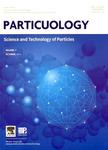Antibacterial properties of cerium oxide nanoparticles: Recent progresses and future challenges
作者机构:Guangxi Med Univ Coll & Hosp Stomatol Nanning 530021 Peoples R China Guangxi Med Univ Guangxi Key Lab Oral & Maxillofacial Rehabil & Rec Nanning 530021 Peoples R China Guangxi Med Univ Affiliated Hosp 1 Nanning 530021 Peoples R China Guangxi Univ Sci & Technol Sch Med Liuzhou 545005 Peoples R China Shenzhen Bay Lab Inst Biomed Hlth Technol & Engn Shenzhen 518107 Peoples R China Shenzhen Bay Lab Inst Syst & Phys Biol Shenzhen 518107 Peoples R China Univ Queensland Australian Inst Bioengn & Nanotechnol Bld 75 St Lucia Qld 4074 Australia
出 版 物:《PARTICUOLOGY》 (颗粒学报(英文版))
年 卷 期:2024年第93卷第10期
页 面:264-283页
核心收录:
学科分类:07[理学] 0817[工学-化学工程与技术] 070203[理学-原子与分子物理] 0805[工学-材料科学与工程(可授工学、理学学位)] 0702[理学-物理学]
基 金:National Natural Science Foundation of China
主 题:Nanoparticles Cerium oxide Antibacterial activity Nanozyme Fenton reaction CEO2 NANOPARTICLES GREEN SYNTHESIS BIOFILM FORMATION ESCHERICHIA-COLI OXIDATIVE STRESS LEAF EXTRACT GROWTH TOXICITY MECHANISMS NANOMATERIALS
摘 要:Use of cerium oxide nanoparticles (CeO2 2 NPs) to optimize management of resistant microorganisms has received increasing attention due to non-specific activity of inorganic antibacterial agents. Understanding the mechanism of action is essential to elucidating the antibacterial activity of CeO2 2 NPs against bacteria. Therefore, this review aims to summarize the antibacterial mechanisms of CeO2 2 NPs and correlate the structural and physicochemical properties of CeO2 2 NPs to their antibacterial activity. We further summarize the strategies for the improvement of the antibacterial performance of CeO2 2 NPs and provide our opinions for future challenges as a conclusion. (c) 2024 Published by Elsevier B.V. on behalf of Chinese Society of Particuology and Institute of Process Engineering, Chinese Academy of Sciences.



